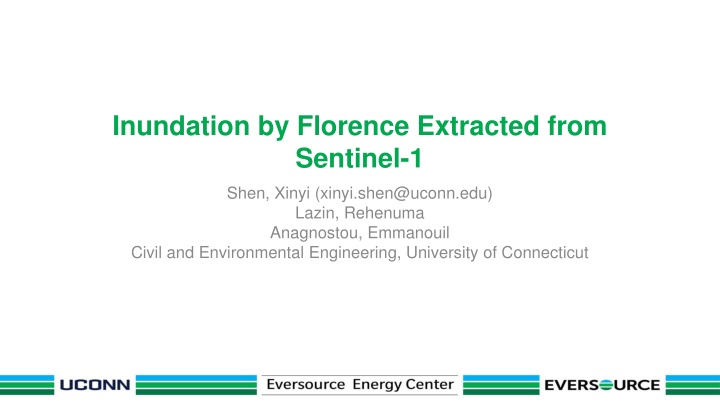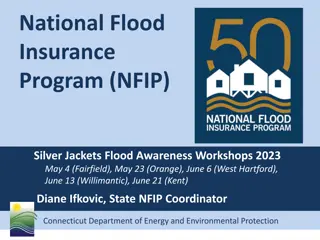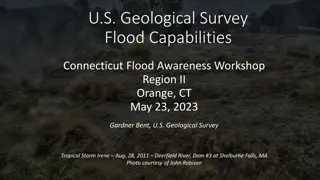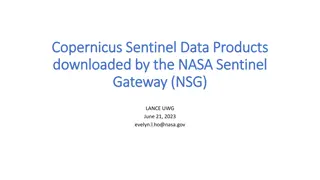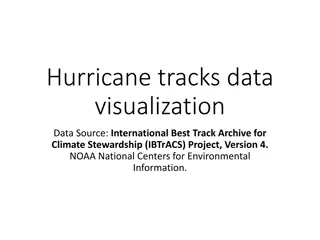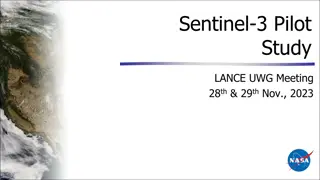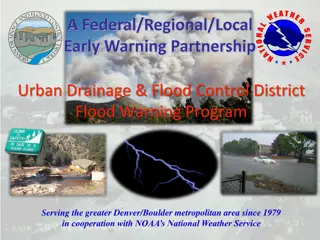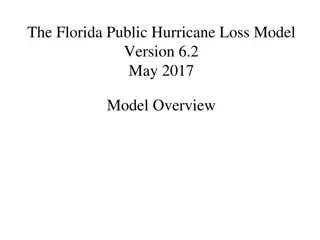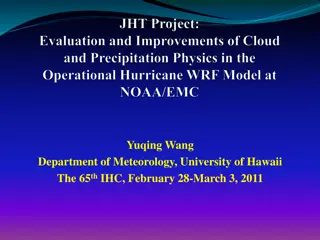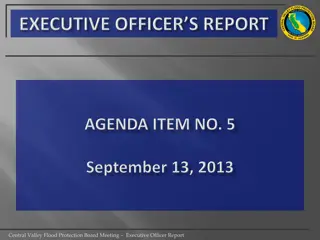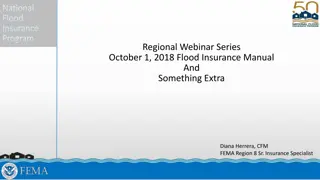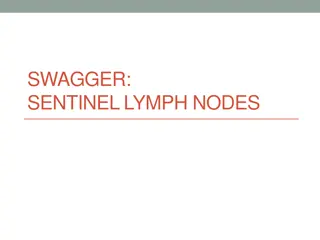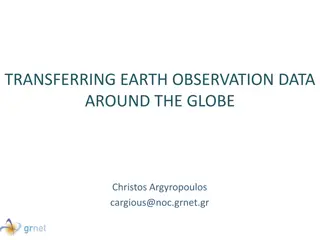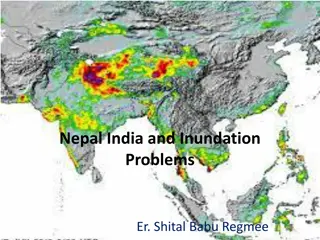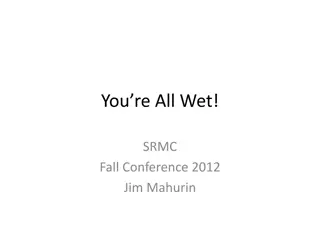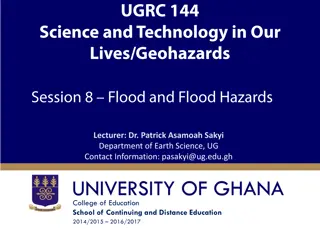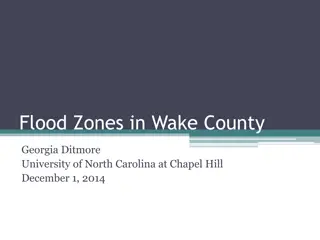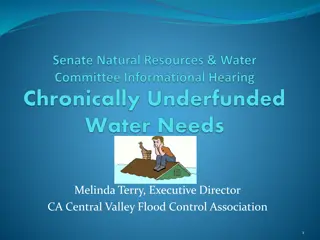Near Real-Time Flood Inundation Mapping Using Sentinel-1 Data During Hurricane Florence
A study by Shen, Xinyi and colleagues from the University of Connecticut has developed the RAdar Produced Inundation Diary (RAPID) algorithm for near real-time flood inundation mapping using Synthetic Aperture Radar (SAR) data from Sentinel-1 during Hurricane Florence. The analysis revealed large inundation areas along rivers and coastal regions in North Carolina, South Carolina, and Virginia, with varying severity on different dates. Detailed observations on inundation patterns and severity are provided for September 18th and 19th. The study emphasizes the utility of SAR data for operational flood mapping during extreme events.
Download Presentation

Please find below an Image/Link to download the presentation.
The content on the website is provided AS IS for your information and personal use only. It may not be sold, licensed, or shared on other websites without obtaining consent from the author.If you encounter any issues during the download, it is possible that the publisher has removed the file from their server.
You are allowed to download the files provided on this website for personal or commercial use, subject to the condition that they are used lawfully. All files are the property of their respective owners.
The content on the website is provided AS IS for your information and personal use only. It may not be sold, licensed, or shared on other websites without obtaining consent from the author.
E N D
Presentation Transcript
Inundation by Florence Extracted from Sentinel-1 Shen, Xinyi (xinyi.shen@uconn.edu) Lazin, Rehenuma Anagnostou, Emmanouil Civil and Environmental Engineering, University of Connecticut
Method The RAdar Produced Inundation Diary (RAPID) algorithm [1] SHEN, X., ANAGNOSTOU, E. N., ALLEN, G. H., BRAKENRIDGE, R. G. & KETTNER, A. J. 2018. Near Real-Time (NRT) Flood Inundation Mapping by Synthetic Aperture Radar (SAR). Remote Sensing of Environment, under review. [2] Xinyi Shen Emmanouil N Anagnostou, Ziyue Zeng, Albert Kettner, Yang Hong (2017) What is missing An operational inundation mapping framework by SAR data , AGU Fall Meeting 2017, H53J-1603. [3] Xinyi Shen, Rehenuma Lazin, Emmanouil N. Anagnostou, and Robert G. Brakenridge (2017). Mapping the recent US Hurricanes Triggered Flood Events in Near Real Time , AGU Fall Meeting 2017, Late-breaking.
Conclusion Sentinel-1 data are available on Sept. 14th, 15th, 17th, 18thand The best coverage was on 19th Data on 14thand 15thonly covers coastal area and the results are not shown in these slides Data on 17thonly covered the west marginal of the flood thus did not show much flood Large inundation are detected along the Great Pee Dee River (both 18th and 19th), Cape Fear River, Black River, Neuse River and Coastal Area in NC Flooding was centralized in NC and northeast of SC and was detected in VA as well In Great Pee Dee River, inundation on 18this more severe in upstream than on 19th.
